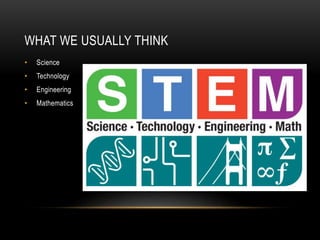
Social studies of science research (e.g., Ben-David 1971 Price 1986) devoted to elucidating the interplay between science and societal conditions point out that it is no accident that the United States has led the world both economically and in science, as America’s economic strength has been closely linked to its advances in science and technology ( NAS et al. Conversely, scientific progress depends on the strong financial and non-financial support of society as a whole. Its central role in promoting technological innovation and sustained economic growth is not contested. The crucial role of science in a modern society is commonly acknowledged ( Pavitt 1996 Xie & Killewald 2012). and the mediocre international ranking of US student performance require more research, a task that is best accomplished through interdisciplinary approaches. Explanations for group disparities within the U.S. Internationally, American students lag behind those in some countries with less economic resources.

Domestically, disparities by family SES, race, and gender persist in STEM education. However, while commonly used measures of socioeconomic status (SES) predict the attainment of general education, social psychological factors are more important influences on participation and achievement in STEM versus non-STEM education. Cognitive and social psychological characteristics matter for both major components, as do structural influences at the neighborhood, school, and broader cultural levels. The reviewed literature shows that different social factors affect the two major components of STEM education attainment: (1) attainment of education in general, and (2) attainment of STEM education relative to non-STEM education conditional on educational attainment. In this article, we review and discuss current research on STEM education in the U.S., drawing on recent research in sociology and related fields. Now, all three are involved with Science, Technology, Engineering and Mathematics activities, and the older two hope to pursue STEM-related careers.Improving science, technology, engineering, and mathematics (STEM) education, especially for traditionally disadvantaged groups, is widely recognized as pivotal to the U.S.’s long-term economic growth and security.

With just over two men for every woman working in STEM careers, they continue to promote women in the field and narrow the gender gap. ( The Daily of the University of Washington) While it is true that students must keep apace of the STEM disciplines, many caution that it cannot be at the expense of the humanities such as literature, history and the arts.Īlthough this adage is something that is often accepted, it wasn’t fully understood at what age boys and girls begin to deviate in terms of interest in STEM fields and their self-confidence about performing in those fields. Over the decades, as technology has advanced at a rapid pace, the concern with educating a workforce that can fill these technical jobs has only increased. The concern about educating students in STEM areas first arose in the 1950s when some felt that the United States was falling behind in the space race. The National Science Foundation originally used the acronym SMET, but in 2001 it officially changed the acronym to STEM. The term is primarily used to discuss education and academics, as well as the workforce. STEM is an acronym for the words Science, Technology, Engineering, Mathematics. We will examine the meaning of the term STEM, where it came from and some examples of its use in sentences.

STEM is an acronym first coined in the 1990s in the United States. An acronym is an abbreviation that is formed by taking the initial letters of the words in a phrase and creating a new word that is pronounceable.


 0 kommentar(er)
0 kommentar(er)
